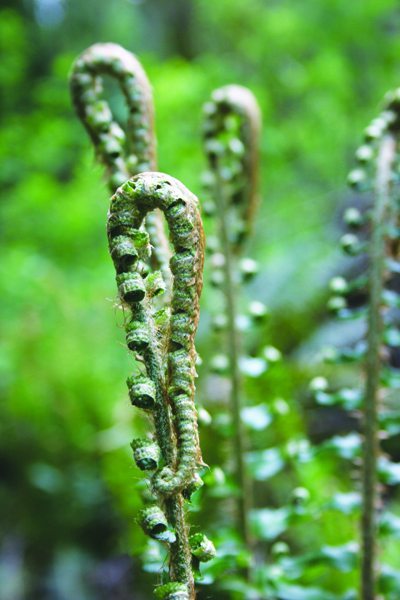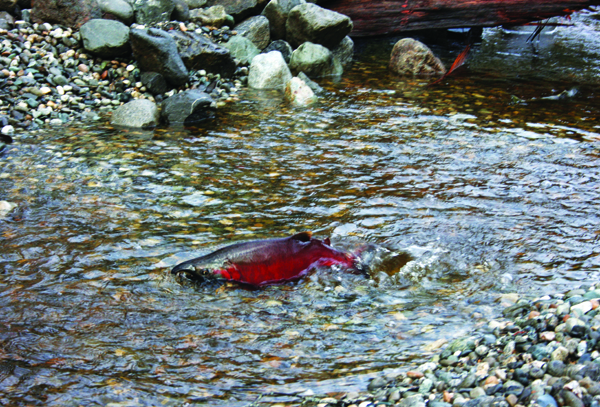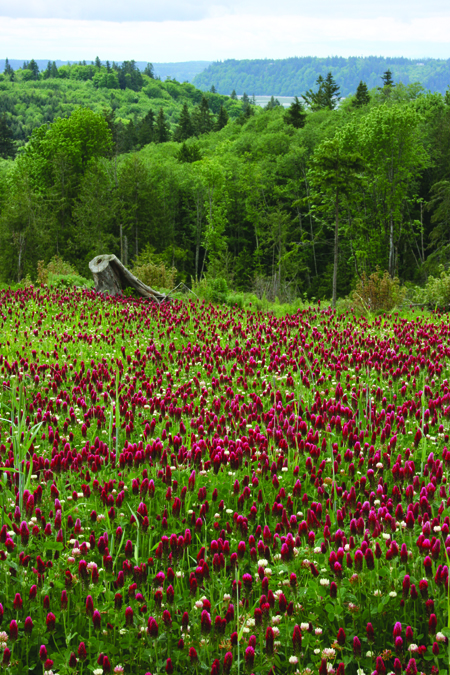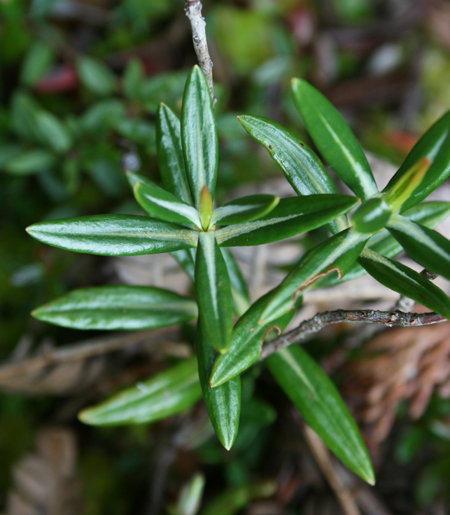by Niki Cleary, Tulalip News
Everyone has heard the jokes or seen the memes about ‘Indian time,’ the ones that explain why Natives are consistently late to dates, appointments, even their own get-togethers. Despite the jokes, the description of Indian time that resonates with me came from Tulalip elder tiatmus Raymond Moses. He told me that Indian time is about paying attention to the world around you. It’s about seeing the signs of the world and being ready when it is time to do what you need to do. That may be gathering or harvesting, or it may be spiritual work, but no matter what you are doing, when you are engaged in something, you have a duty to give it your full attention.
I’ve found that to be true on so many levels. Natives may be late to an appointment, but it’s usually because they devoted all of their attention to the last thing they were doing. And, while we may be late to appointments or social commitments, we’re in the woods when the berries or cedar are ready and we’re on the water when the salmon are ready.
Phenology, in my opinion, is a fancy western term for tiatmus’ version of ‘Indian time’. In late September, Northwest Indian College sponsored a Phenology workshop to educate about the causes of climate change and the impacts on native plants and tribal cultures.
I know what you’re thinking, this is interesting and all, but why should I care? You should care because those cultural timekeepers that we’ve lived by since time immemorium are out of sync due to climate change. The species that we rely on for physical, spiritual and cultural sustenance may move out of our legally defined territories as they search for climates that match their biology.
Our world is changing and we have the knowledge and political clout to make sure that our culture and the species that are integral to our culture, don’t disappear with it. We have the power to evolve with climate change, instead of being decimated by it.
Cultural timekeepers
Wikipedia defines phenology as: the study of periodic plant and animal life cycle events and how these are influenced by seasonal and interannual variations in climate, as well as habitat factors (such as elevation). In Salmon Ceremony we learn about a messenger, a black and yellow butterfly who tells us when the kings are coming in. This is what phenology is for indigenous people. Our oral histories tell us how our timekeepers were given certain gifts and entrusted with certain duties, how both human beings and plants and animals all have mutual obligations. As indigenous people, our timekeepers aren’t just dry indicators of biological systems, they’re intimately tied to our values and identity, we consider them our relatives.
“When settlers came to our land, it was forested,” described Tulalip Rediscovery Program Coordinator Inez Bill. “When they seen out and looked at the land, it looked like it was not inhabited, so they didn’t think that anyone was here.
“When you think about our ancestors, they were bonded with our land, it was a spiritual bond. This environment provided for all of our needs, we didn’t need anything. There was an abundance of resources and the teachings and values our people lived by every day, that was our way of life.
“How to gather, how to hunt, how to make a canoe, everything was respected and it was a gift. It was a spiritual gift and if you didn’t take care of these gifts, you lose it. That’s specifically true of plant knowledge.”
Inez described herself as a conduit, not a bank of knowledge. To this day, the mutual responsibility between Indigenous communities and our environment, weighs heavy on her mind.
“I’m nobody, I’m nothing,” she quietly declared. “I’ve had the opportunity to have a number of people in my life that shared their knowledge with me and it made me a stronger person and they are now my roots. A lot of friends and family have guided my life and my spiritual people have helped with my spiritual walk. These are the things that are important when I talk about plants.
“My work with plants began with our summer youth. The kids loved being outside, they’d be in the woods and they didn’t want to come back. We’d learn how to make tea together, and teaching them how to do it correctly, they have to be in the right frame of mind, and the teachings and values that go with that.
“From my perspective, these teachings and values are very important when we look at plants and how we use them. We want them to be gifts for us, a lot of these foods nourish our body, but they also nourish the spirit. We need to do the best we can to treat it with respect and care. We have rules we follow when we harvest because we want to honor the plants that we harvest.”
Part of that respect includes sacrifice. Inez explained that this year she harvested very little because many species were struggling due to the drought. Brian Compton of Northwest Indian College followed up on the sentiment, recalling from his four decades of work in indigenous America the strong relationship between native plants and native people.
“It’s the idea that they’re our relatives,” he pointed out. “When your relative is suffering, you don’t damage it. This is another one of the dimensions that may not be recognized in the more dominant society. That deeply felt connection to, not just another life form, but a relative.”
Take notice, take action
Shifting baselines is a concept often applied to the Pacific Northwest and the Salish Sea. It’s the idea that compared to far more degraded areas, what we have here and now is abundant or healthy or normal. Oftentimes people move to the Pacific Northwest and gush about how green and beautiful it is. They see the forests and see them as signs of wilderness and vitality. However, compared to historic norms for this area, what we have is a fraction of a healthy environment.
Ask someone whose family has been here for generations and they’ll tell you that the second and third growth forests that dominate the landscape today support a far different host of animals and plants than an old growth forest. Someone whose grandparents fished in the 1950s knows that a handful of undersized silvers in a single set is not a sign of abundance. Someone who gathers berries and found only small seedy fruits this year, knows that drought is real and dangerous. Someone who passes on the traditional stories about seals and the lack of stories about sea lions, understands that our waters are vastly different now than they were in our ancestor’s times.
What do you do with that knowledge? Record it. Pass it on to your family members. Go into nature and recall the stories of your childhood. Explain to your grandchildren that the bamboo they love playing swords with (Japanese knotwood) is not from here, doesn’t belong here and it’s our responsibility to get rid of it.
If you don’t know, learn. Go outside and record the signs. As they shift from year to year, pay attention to what has changed. Live your treaty rights instead of just talking about them. Co-manage on a small scale. Make room in your manicured lawn for trailing blackberries, get to know and help eradicate invasive species.
Most of all, engage. Be a leader in your family. Be a leader in your tribe. Be an ambassador and a champion for our winged and finned and rooted relatives. Be a steward of our environment and help our tribe fulfill our responsibility to our world.
Be sure to keep watching the syəcəb, Tulalipnews.com and Tulalip TV (On and Off the Rez at www.tulaliptv.com) for more opportunities to learn about our environment, how Tulalip is evolving with climate change and how small contributions can lead to big change.
Contact Niki Cleary, ncleary@tulaliptribes-nsn.gov




